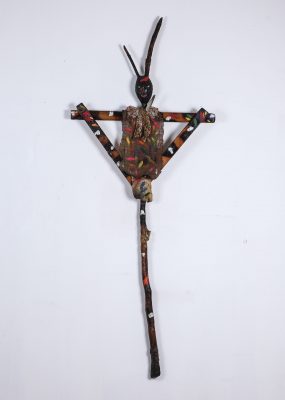
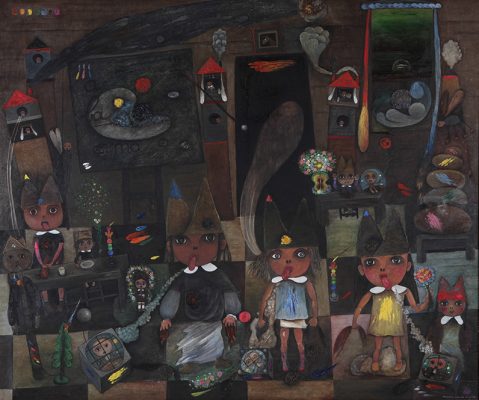
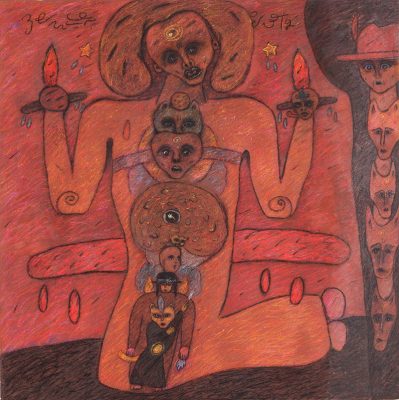
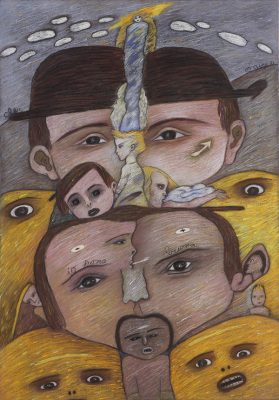
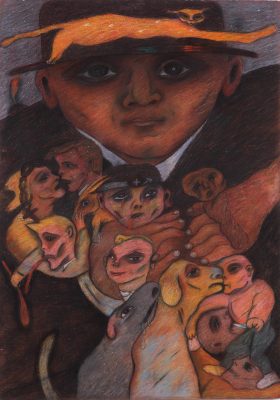

Opening: Wednesday, May 7, 2014, from 6:30pm
On display from May 8 to July 4, 2014
It is a solo show with the more representative operas of the artist, realized between first ’70s and the end of ’80s: about thirty works in oil, pastels and sculptures.
Marie-Claire Guyot was born in Paris in 1937. She was grown like a twin with her sister Elisabeth (a year older). She started to paint in 1961, when she married Bruno Colombo and moved to Italy, first in Venice than in Turin and finally in Milan. But each summer she went back in Burgundy to the old family house which was full of memories where she shared the artistic path with her sister. She was looking for her lost roots and that corresponds to an obsessive introspection.
She is always the subject of her works, an imaginary universe where childhood, maternity and religion are transformed, or transfigured, on canvas: there are no trees neither landscapes, just a loneliness crowded with enormous or very little characters, animals and symbols, mouths and bellies, the ones inside the others with teeth clenched by suffering. A “creation path” (this is the way that the two sisters named their artistic process), supported by the contact with Louis Deledicq, the art expert to whom every year Marie-Claire gives regularly her operas, real childbirths that the artist doesn’t want to show to anyone, not even to her daughters. Guyot’s secret opera is a solitaire trip inside soul pains: silent and grasped by her own sight, she runs from a painting to another and in the meantime the canvas painted all over with red color look as if they would explode like life blood earth.
This anxiety appears also in the sculptures, fragile and perturbing constructions done with wheels, chains, nails, stirrups, pulleys, but also laces, little ripped shoes, lace bonnets: all little relicts of a remote and loved universe. These are the ancient “treasures” that, with a maniacal care, she found into the garret or from the storehouse, or into the kitchen of the large family house in the French country side. The rusty irons are part of her lost and dreamed childhood that Marie-Claire is continuing to follow and from which she would like to free herself, like a sweet but also paralyzant obsession.
Galleria Maroncelli 12 – Milano
Copyright © 2024 – Tutti i diritti riservati
